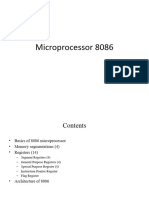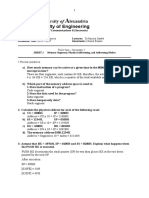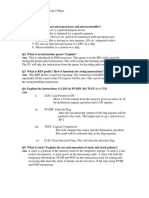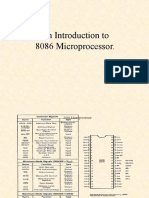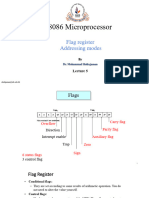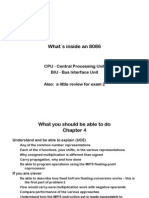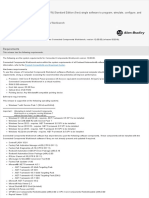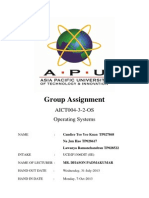0% found this document useful (0 votes)
273 views6 pagesMicrocomputers and Interfacing Final Exam Answer Key
The document contains a multiple choice quiz with 10 questions, descriptive questions asking about pointers, registers, execution units, and addressing modes, and workouts involving analyzing assembly language code line by line. The descriptive questions cover topics like index registers, general purpose registers, flags, machine language vs assembly language, macros vs procedures, and intrasegment and intersegment addressing modes. The workouts involve step-by-step analysis of assembly code including register transfers, logic operations, and rotating and shifting bits with flags.
Uploaded by
Biruk DawitCopyright
© © All Rights Reserved
We take content rights seriously. If you suspect this is your content, claim it here.
Available Formats
Download as PDF, TXT or read online on Scribd
0% found this document useful (0 votes)
273 views6 pagesMicrocomputers and Interfacing Final Exam Answer Key
The document contains a multiple choice quiz with 10 questions, descriptive questions asking about pointers, registers, execution units, and addressing modes, and workouts involving analyzing assembly language code line by line. The descriptive questions cover topics like index registers, general purpose registers, flags, machine language vs assembly language, macros vs procedures, and intrasegment and intersegment addressing modes. The workouts involve step-by-step analysis of assembly code including register transfers, logic operations, and rotating and shifting bits with flags.
Uploaded by
Biruk DawitCopyright
© © All Rights Reserved
We take content rights seriously. If you suspect this is your content, claim it here.
Available Formats
Download as PDF, TXT or read online on Scribd
/ 6
